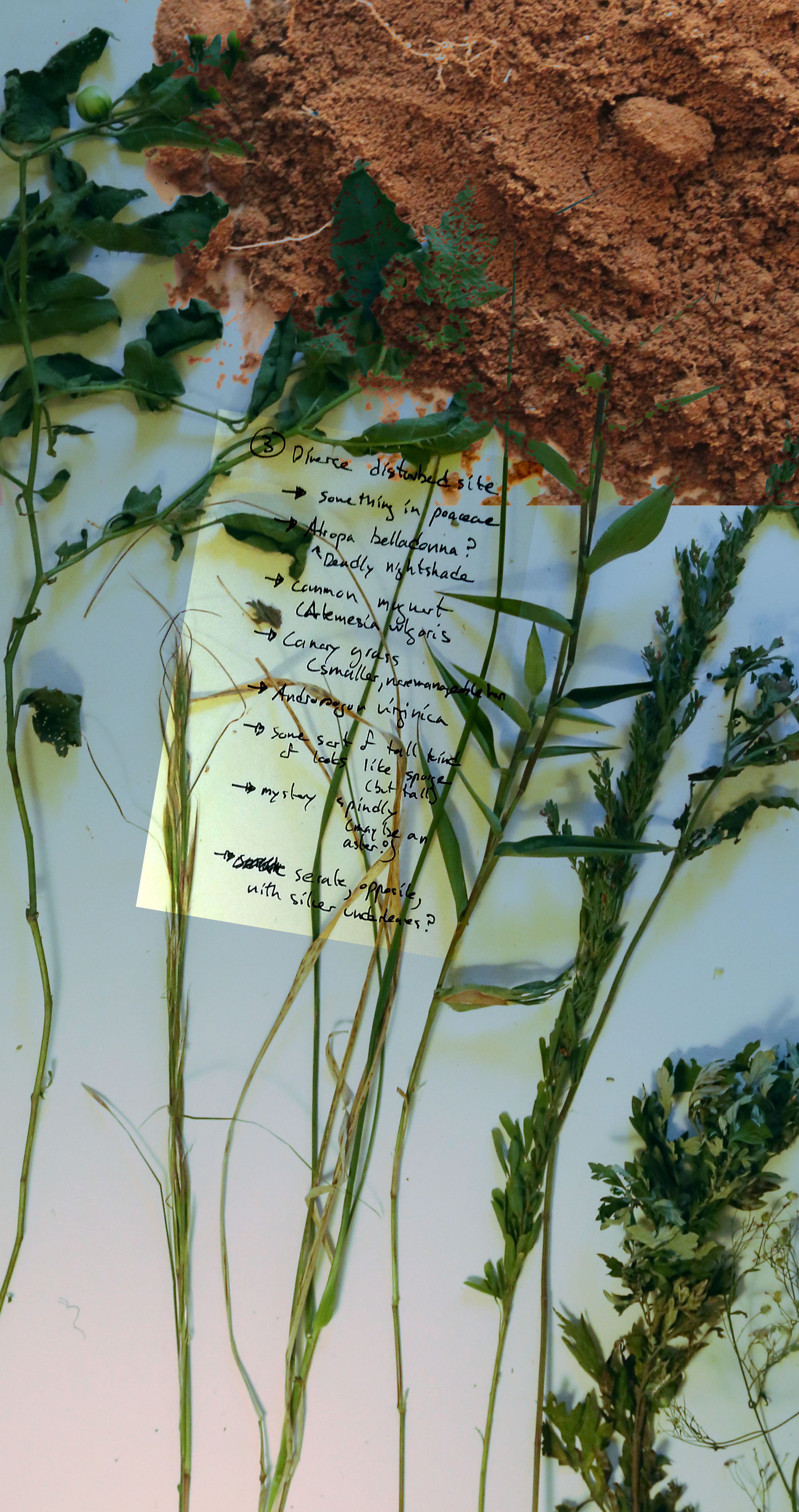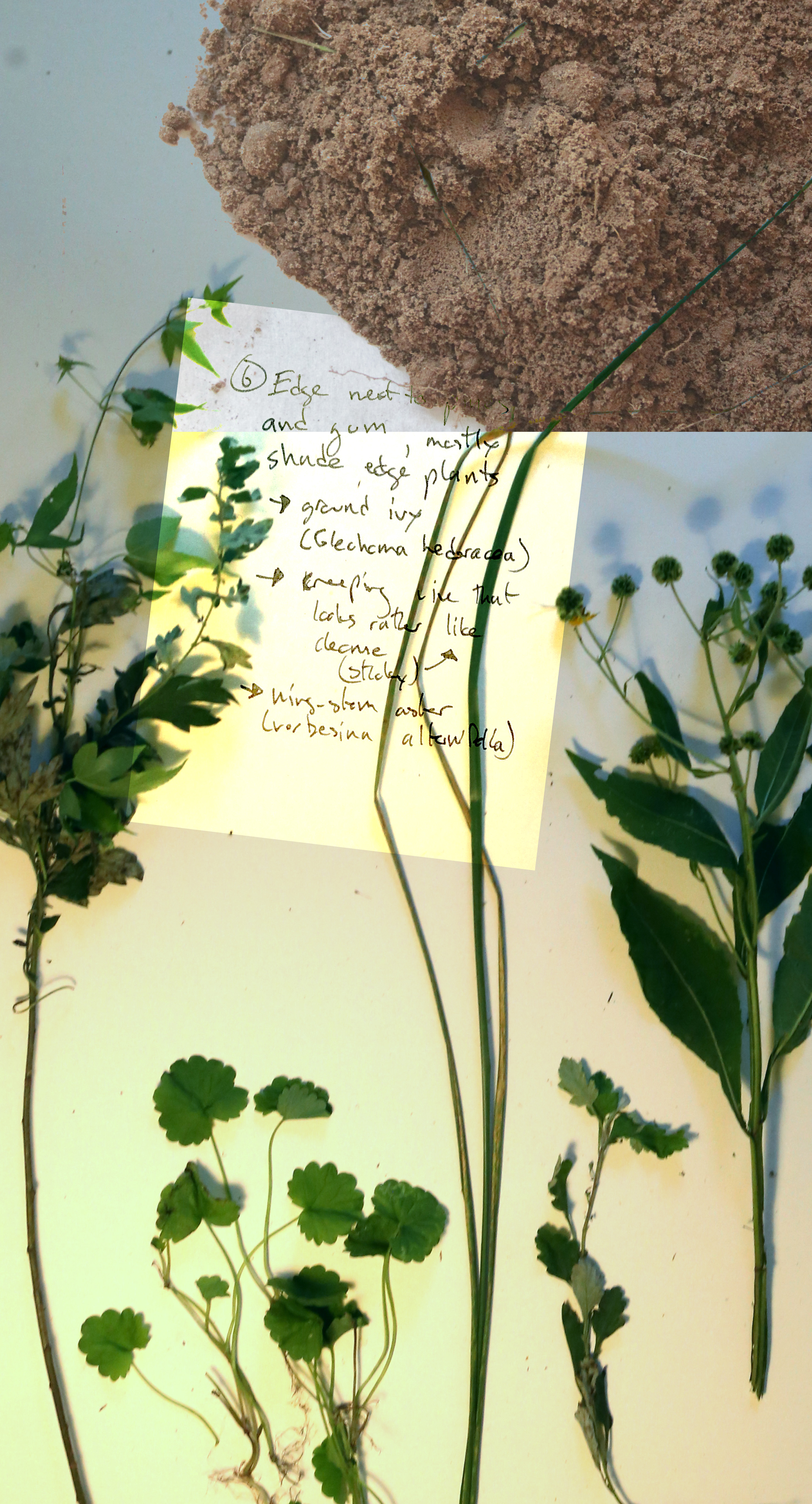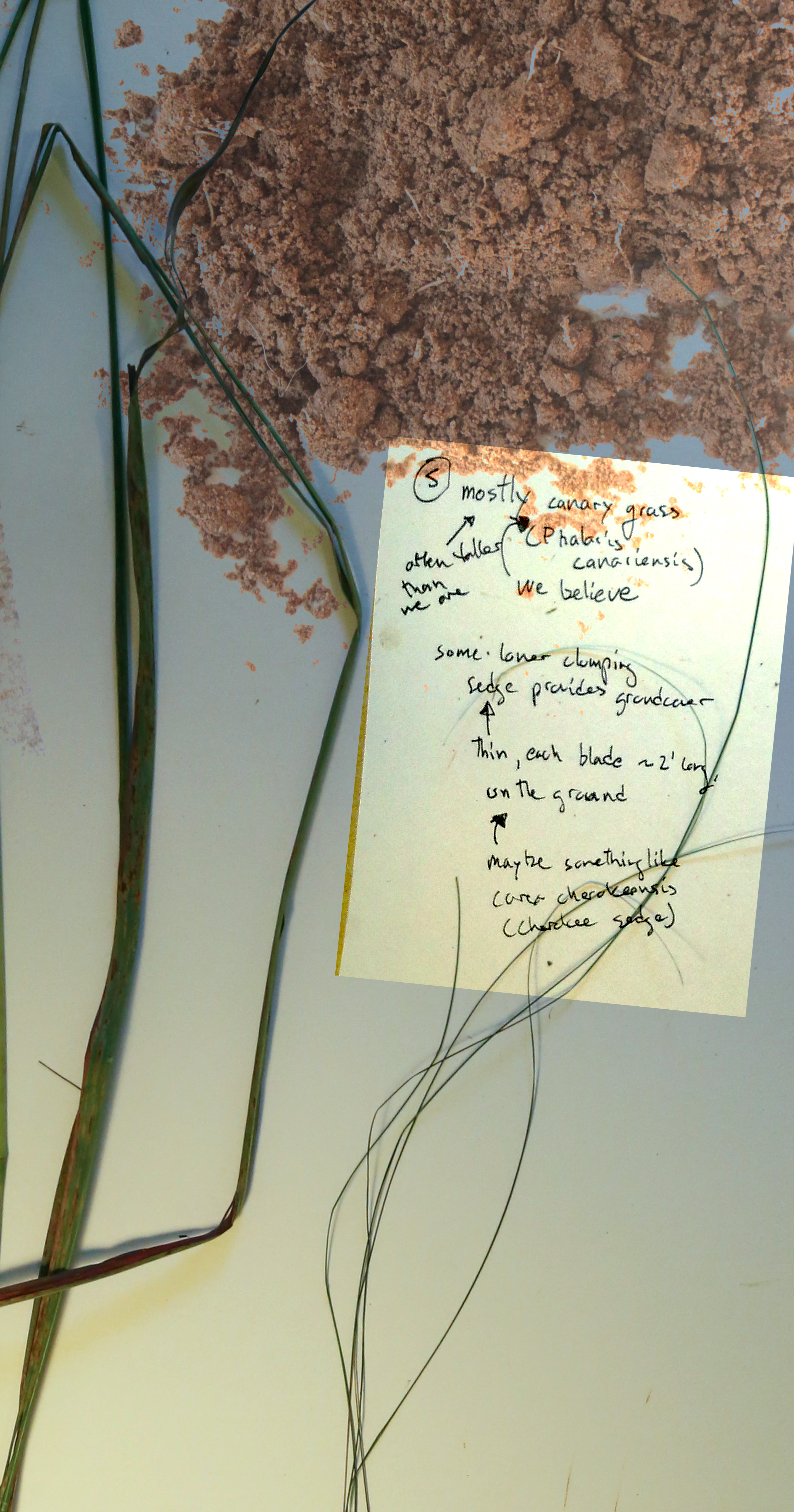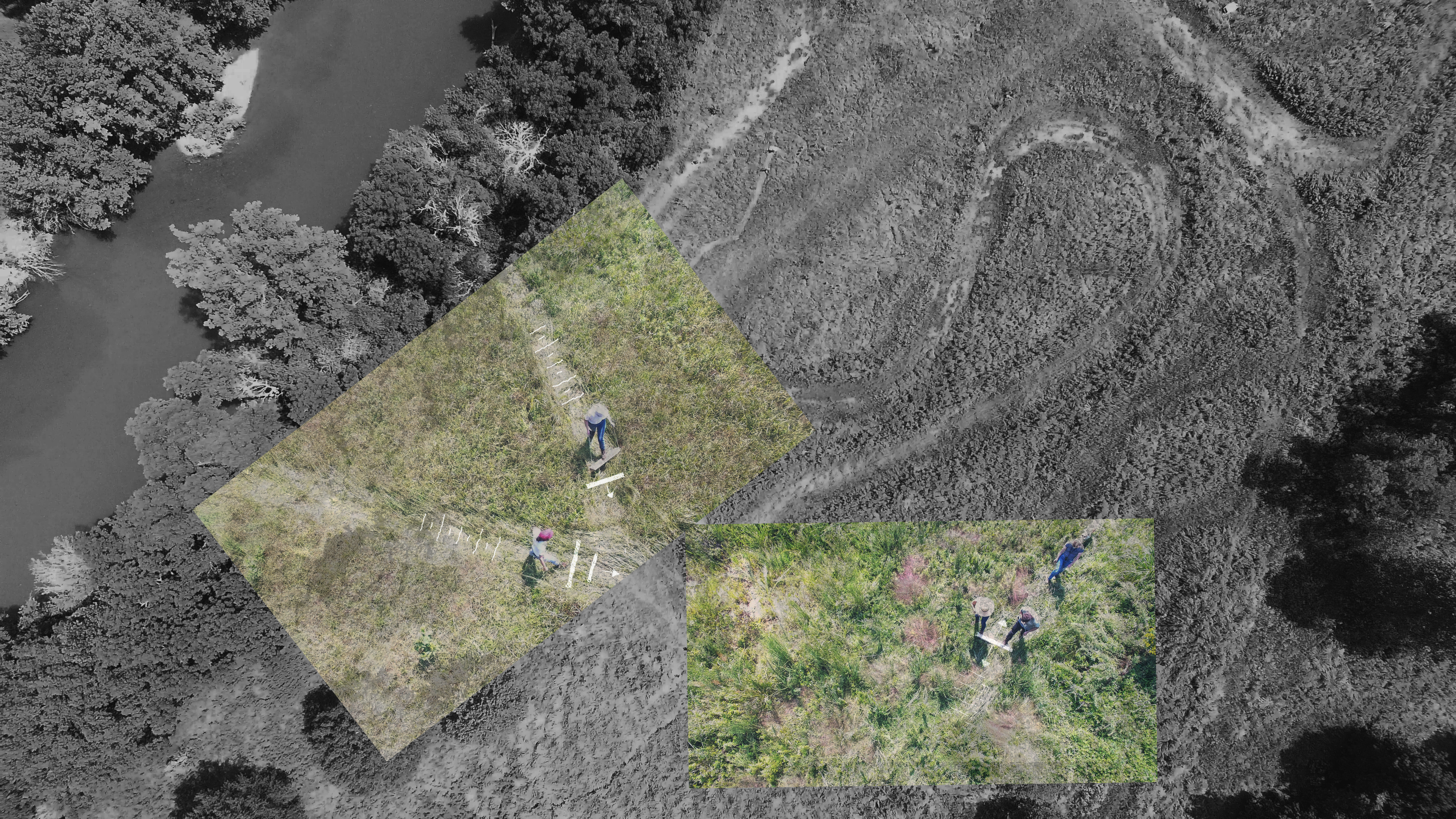Collective Projects
Experiential Plots
Ongoing. Experiential Plots are a series of articulated spaces at Milton that are continuously developed, used, and studied by a collective of students practicing “curious methods,” a creative practice that places interventions (doing) before analyzing (observing). The Experiential Plots are in-situ explorations of spatial experiences driven by alterations to living, landscape mediums, and tools related to modification of the landscape. They are also spaces for living - designated nodes outdoors meant for gathering, skill sharing, questioning, making, and learning over time.
Practiced techniques for making outdoor space (to date): Pruning/Sawing
Matting herbaceous groundcover
“Framing” space with felled snags
Lidar Scanning
Crimping
Finding the meadows fecund and challenging to navigate, we turned to crimping, a no-till method of mulch making. Crimping allowed us to create paths through an early succesional meadow using boards, ropes, and our bodies. Rhythms of human movement, micro topography and vegetation variation, and the rudimentary crimp boards determined the path. The observations of these rhythms through photograph and hand sketch lead to thoughts about the way grasses, such as Tridens flavus, fall upon intentional compaction. And, how other grasses, such as Eragrostis pectinacea, have such a striking visual effect that we carefully took measure to avoid crimping them. The simple act of doing, or designing, guided by site-based intuition offers an alternative approach to studio-based linear design. The summary image combines drone footage of the crimped paths with a notational system of the rhythm of our tools and motion.
Mapping the Micro
In conjunction with a skill share where we developed a photogrammetry model of Milton, we took soil and typical vegetation samples at the eight, ground control points used to correct the drone imagery.








In Color
In our efforts as landscape architects to wrestle our work away from purely visual traditions (i.e the picturesque), we often fully reject the visual experience. Being at Milton is a reminder that landscapes engage all our senses as we move through space. In studio, studying color can seem trite. Not at Milton. Our movement, rhythm, and affections were influenced by color in the landscape. Natural dyeing, like drawing, is a form of translating site. Experienceing color on site, collecting plant material, dyeing, then seeing the resultant color on fabric, asks us to consider what is lost and what is discovered through processes of translation.

sonomontage: exploring Milton with the microphone
What can we know by listening? How can a microphone augment our reality, such that we hear differently knowing the site through the sound as material? Sound is not static. Sound is interactions and events making themselves sensorally present. As I let the microphone guide me, the meadow andforest and edge reveal distances of relations and connections manifest in the calls of the insects, birds, and people that face out into the field, inward to the clearing, or out across the river. The sound comes as sea but also as islands. On a second visit on a rainy day, it becomes clear that this homogeneity is not a monolith. As a dampness hangs in the air, the birds take over from the insects that are now eeriely quiet. Sound reveals the eerieness of vibrant matter when it makes itself know equally by its unsettling presence or absence.
